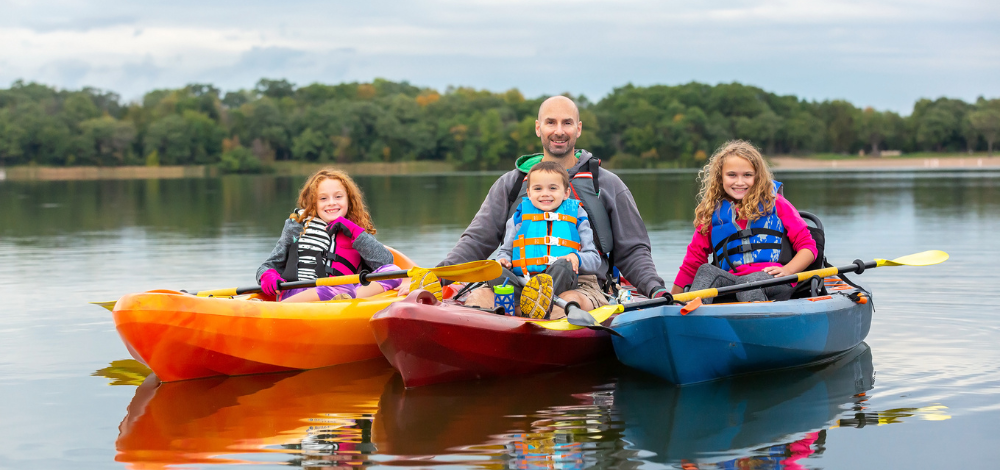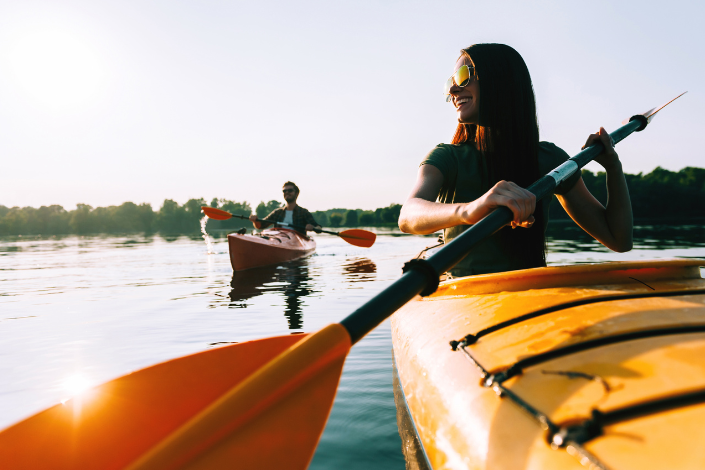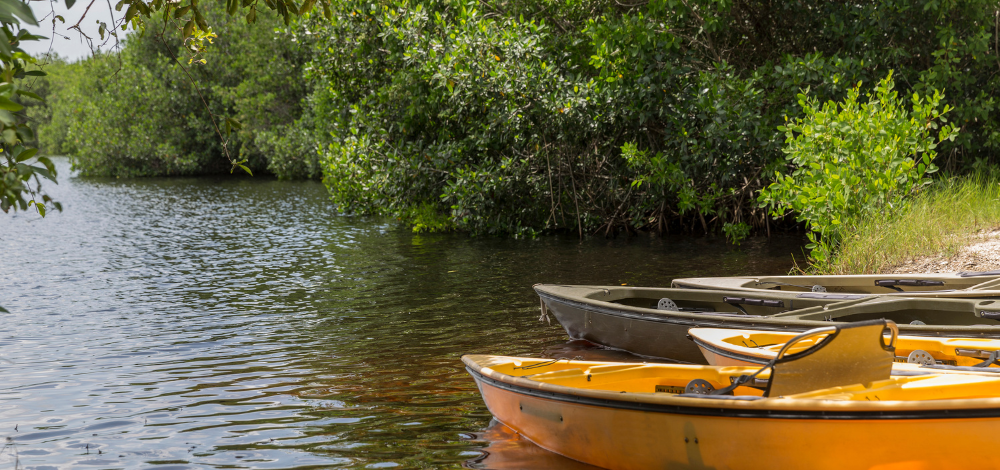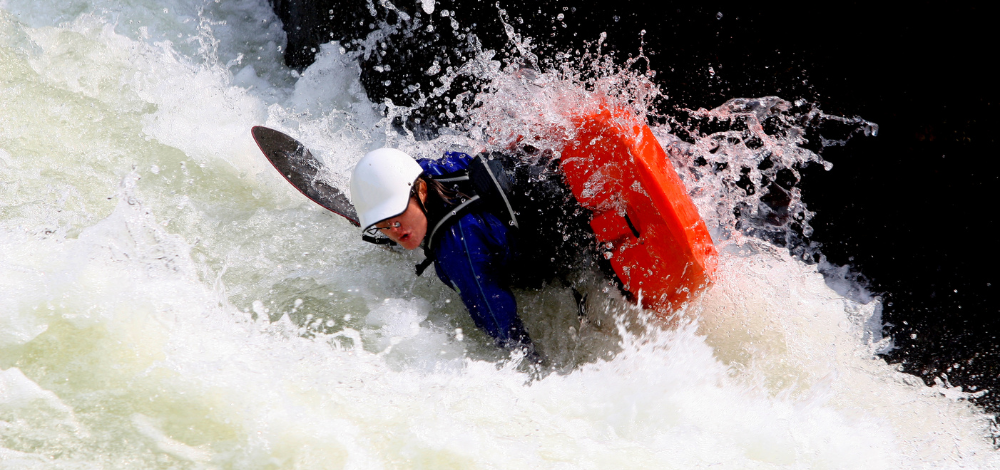
Kayaking is a fun, exciting, and adventurous way to enjoy the outdoors. However, some people have concerns about taking up kayaking if they don’t know how to swim….and it’s a valid concern to have.
As a mom to young kids who aren’t strong swimmers and one doesn’t know how to, I found myself having the same questions.
So, in this blog post, we’ll explore the question of whether kayaking is safe for non-swimmers and what you need to know before taking up this exciting activity.
Is Kayaking Safe If You Don’t Know How to Swim?
It’s important to note that kayaking can be a safe activity for non-swimmers if you take the necessary precautions. If you’re kayaking in a calm lake or river and are wearing a life jacket, you’re unlikely to run into any problems.
However, if you’re planning to take on rougher waters like rapids or strong currents, it’s essential to learn how to swim or be accompanied by a skilled swimmer.
11 Tips For Safe Kayaking For Non Swimmers

There are quite a few things you can do to feel comfortable as a non-swimmer before you go for your first kayaking trip. Consider the following 12 tips:
#1. Get Comfortable With Water
You should consider your level of comfort in and around water. If you’re uneasy or have a fear of water, kayaking might not be the best activity for you.
Now, if you’re willing to learn how to manage your fear and be taught proper safety techniques, kayaking can still be an enjoyable activity even if you’re not a strong swimmer.
#2. Always Kayak With a Buddy

Also, you should always ensure that you’re kayaking with someone else. Regardless of your swimming ability kayaking alone, is never a good idea. If you’re not an experienced kayaker, be sure to have someone with you who can help rescue you in case of an emergency.
#3. Practice Entry and Exit Techniques
Practicing entry and exit techniques from your kayak is crucial. In case of capsizing, it will be easier to get back into your kayak if you’re familiar with getting in and out of it.
Remember that in any situation, it’s important to stay calm and not panic. This will help you make better decisions and avoid making the situation worse.
#4. Check Equipment Before a Trip
Always check your equipment before heading out on the water. Make sure that your kayak is in good condition, your paddle is secure, and your life jacket is in good shape and fits properly. Always carry a whistle or other signaling device with you in case you need to attract attention.
#5. Choose a Calm Spot

When you’re first starting out, it’s best to choose a calm spot with minimal currents or waves. This will help give you more confidence as a kayaker and allow you to become familiar with the basics of kayaking before venturing into rougher waters.
#6. Think Twice About Using a Leash
It’s also important to note that if you’re a non-swimmer, you should think twice about using a kayak leash.
These leashes are meant to keep your kayak from floating away in case of capsizing, however it can be difficult for inexperienced swimmers to release themselves from the leash and back into their boat.
#7. Become a Better Swimmer
It’s a good idea to work on improving your swimming ability if you plan on kayaking in more challenging waters.
Taking swim lessons or practicing in the pool can help build confidence and give you an extra layer of safety when kayaking.
#8. Work on your fear of water
You should also consider working on your fear of water, if any. You can start small by putting your face in the water and learning to hold your breath, then gradually work your way up to swimming a few laps.
This will help you learn how to stay calm and manage your fear when kayaking.
#9. Choose a Stable Kayak
When choosing a kayak, be sure to select one that is stable and suits your level of experience. Beginner kayaks are wider and more buoyant than advanced models and will help keep you safe while on the water.
#10. Use Outriggers on Your Kayak
If you’re a non-swimmer, it might be a good idea to use outriggers on your kayak. Outriggers are stabilizers that attach to the sides of your kayak and can help prevent capsizing.
This is especially useful in choppy waters or when paddling with strong winds. Having the extra balance can help boost your confidence while kayaking and make it a more enjoyable experience.
#11. Always Wear a Life Jacket
Lastly, always wear a life jacket when kayaking. This will help keep you safe in case of an emergency and ensure that you can be seen by other boaters or rescue personnel. Make sure that your life jacket fits properly and is appropriate for the type of waters you’ll be paddling in.
Is Kayaking Hard for Beginners?
Kayaking can be difficult for beginners, depending on the type of kayak and waters they are paddling in. Beginner kayaks are usually wider and more buoyant, making them easier to maneuver.
I cannot emphasize this enough: it’s important for beginners to practice in calm waters and take caution when heading out into rougher conditions.
As with any physical activity, it takes time and practice to become comfortable with the basics of kayaking. With the right preparation and safety measures in place, kayaking can be an enjoyable experience for beginners.
How Likely Are You to Flip Over in a Kayak?

The likelihood of flipping over in a kayak depends on the type of water conditions, the skill level of the paddler, and the type of boat they are using. In calm waters, it is unlikely for an experienced kayaker to flip over due to their knowledge of basic safety and navigation techniques.
However, in choppy waters or with strong winds, the chances of capsizing increase. Taking extra precautions like using outriggers, wearing a life jacket, and staying aware of changing conditions can help reduce the risk of flipping or capsizing. Additionally, paddling in groups and learning proper recovery techniques are essential for safety on the water.
Conclusion
So, is kayaking safe for non-swimmers? It can be.
Taking the necessary precautions, having a level of comfort around water, paddling with a companion, practicing entry and exit techniques, and checking your equipment are all excellent ways to stay safe while kayaking.
